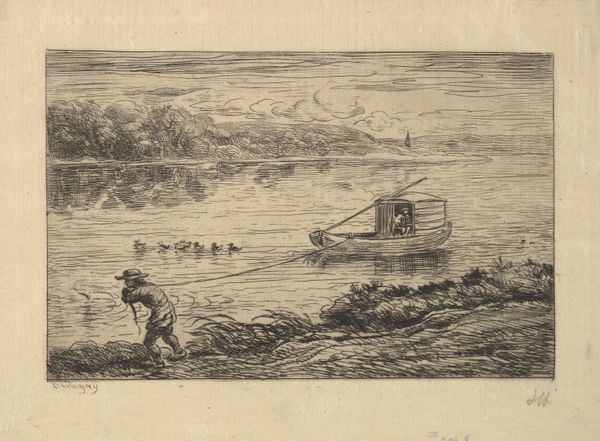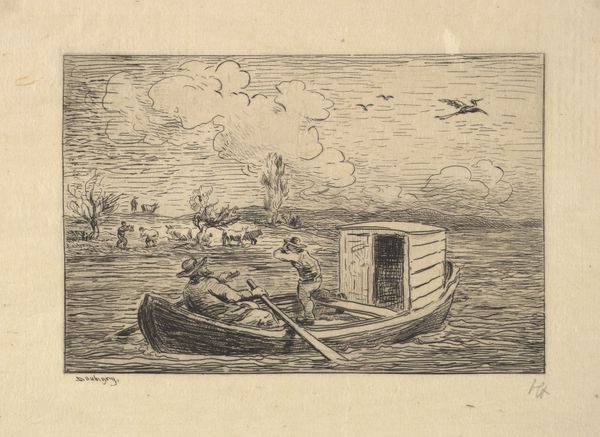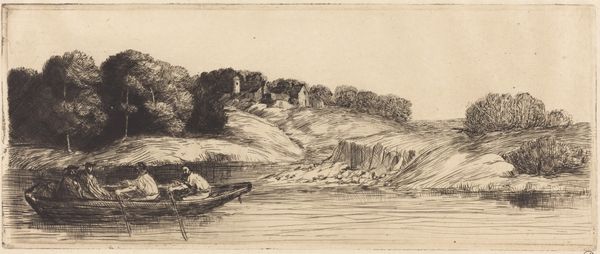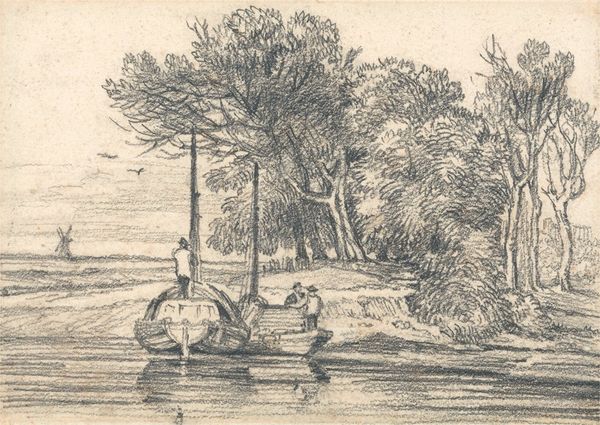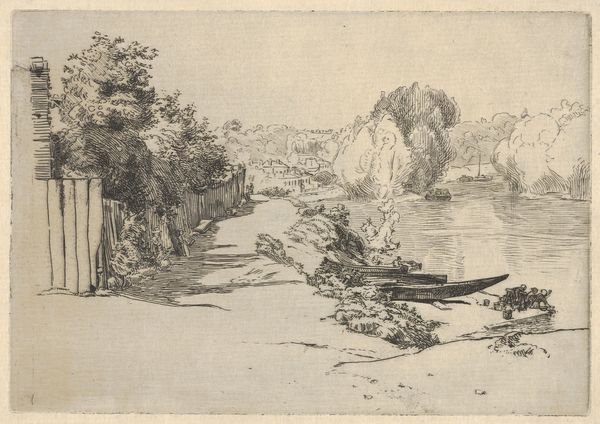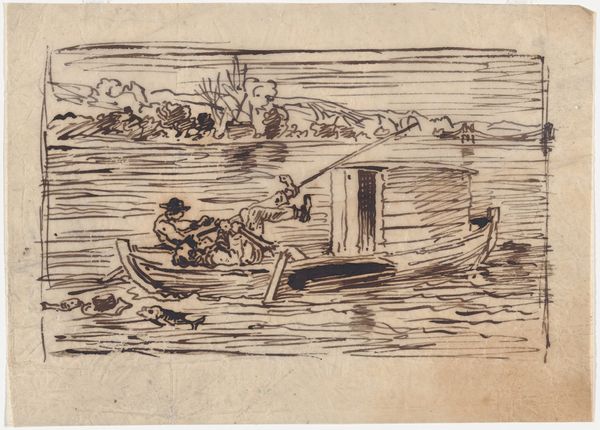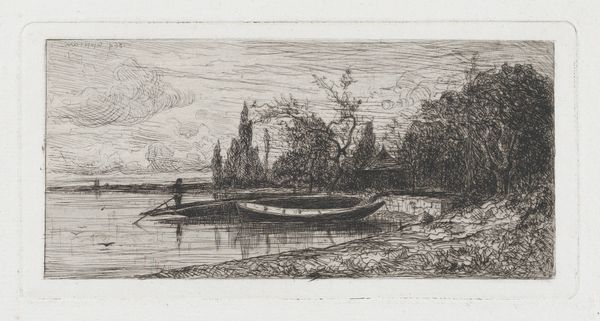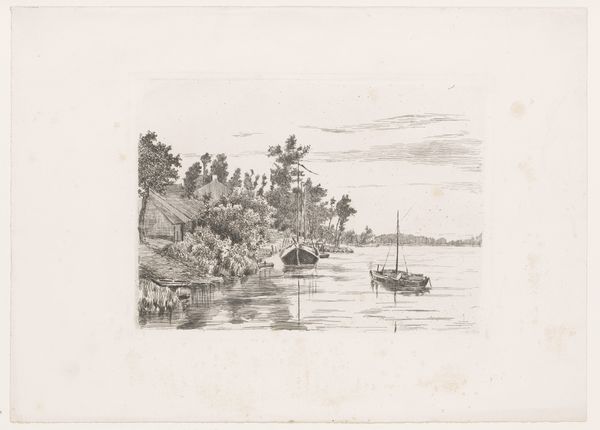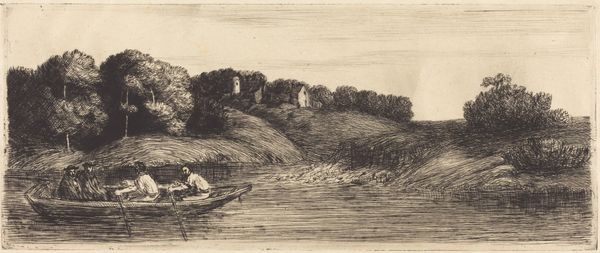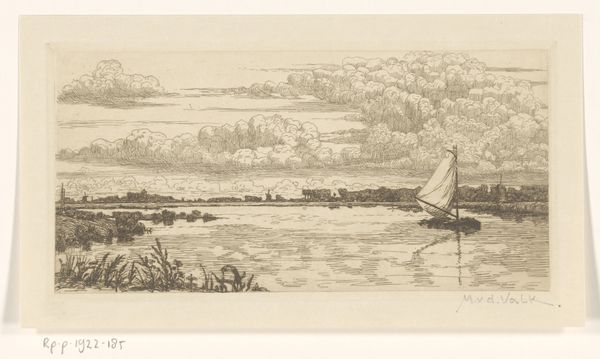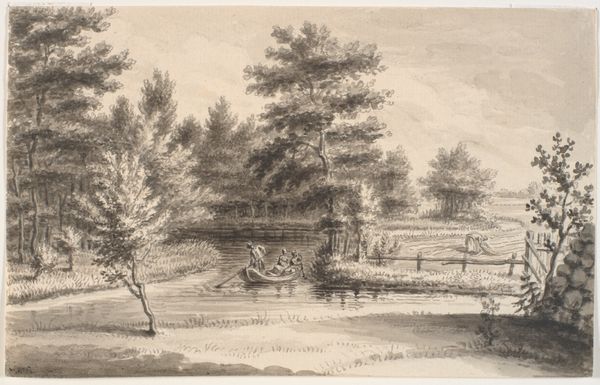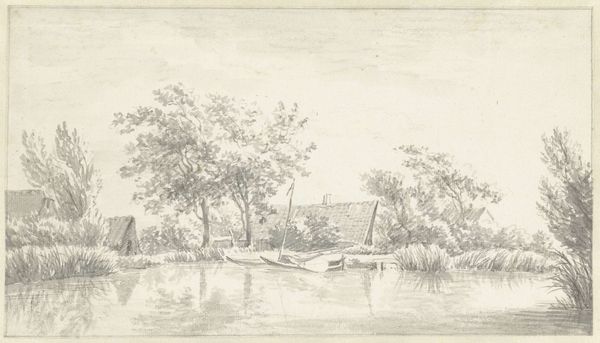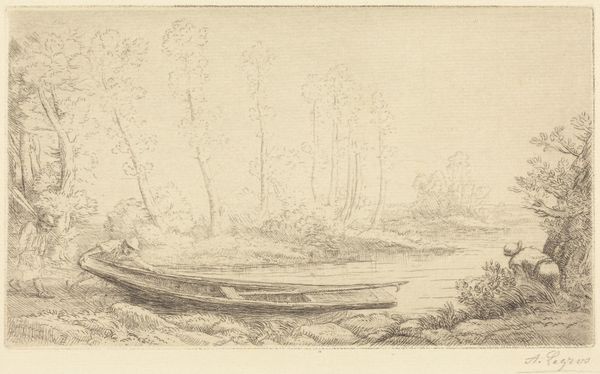
drawing, print, etching
#
drawing
# print
#
etching
#
landscape
#
genre-painting
#
realism
Dimensions: Image: 4 3/16 × 6 5/8 in. (10.6 × 16.9 cm) Plate: 5 13/16 × 7 7/8 in. (14.8 × 20 cm) Sheet: 7 in. × 10 1/16 in. (17.8 × 25.5 cm)
Copyright: Public Domain
Curator: Before us, we have "The Cabin Boy Fishing," an etching produced in 1861 by Charles-François Daubigny, currently held at the Metropolitan Museum of Art. Editor: My first impression is the incredible sense of stillness. It's remarkable how Daubigny evokes such peace and tranquility using only etched lines. The detail is amazing for the size! Curator: Indeed, and what’s also fascinating is how this work, though seemingly a simple genre scene, engages with larger narratives about labor and class. The image centers a solitary cabin boy; positioned not heroically, but embedded within a mundane, everyday activity, that being fishing. Editor: Right. And think about fishing itself as a recurring symbolic act. Across cultures, it's loaded. Here, though, it's less about heroic conquest of nature, and more an understated activity of the working class. He is in communion with his environment and his labour. It almost resembles a rite. Curator: Precisely. Daubigny’s choice of etching, too, feels intentional. The medium allowed him to reach wider audiences. These types of prints brought these scenes of everyday life to middle class homes, in an accessible format. Editor: Looking at how the boat sits close to the shore, you almost see this composition as symbolic. Water often represents the subconscious, and the shoreline feels like a threshold—almost liminal between his labor, his being and that greater world beyond his boat, that of his environment. The fishing and landscape, its peace…they represent more. Curator: I completely agree. Furthermore, Daubigny was working during a time of immense social change in France. By portraying scenes like this, with laborers in these environments, he elevates them… he inserts the importance of the labouring classes into what becomes modern consciousness. Editor: Well, I think this piece shows us how seemingly simple imagery can resonate with profound implications. Thank you! Curator: My pleasure; considering Daubigny’s historical and social contexts helps unveil his narratives, too.
Comments
No comments
Be the first to comment and join the conversation on the ultimate creative platform.
